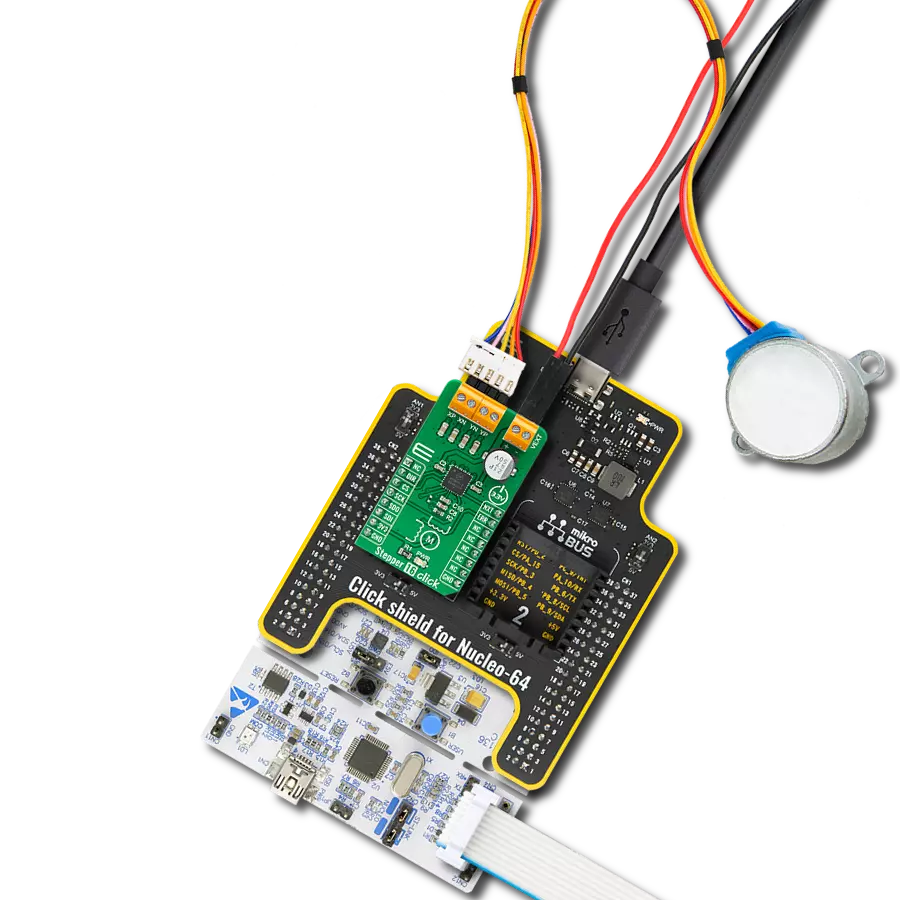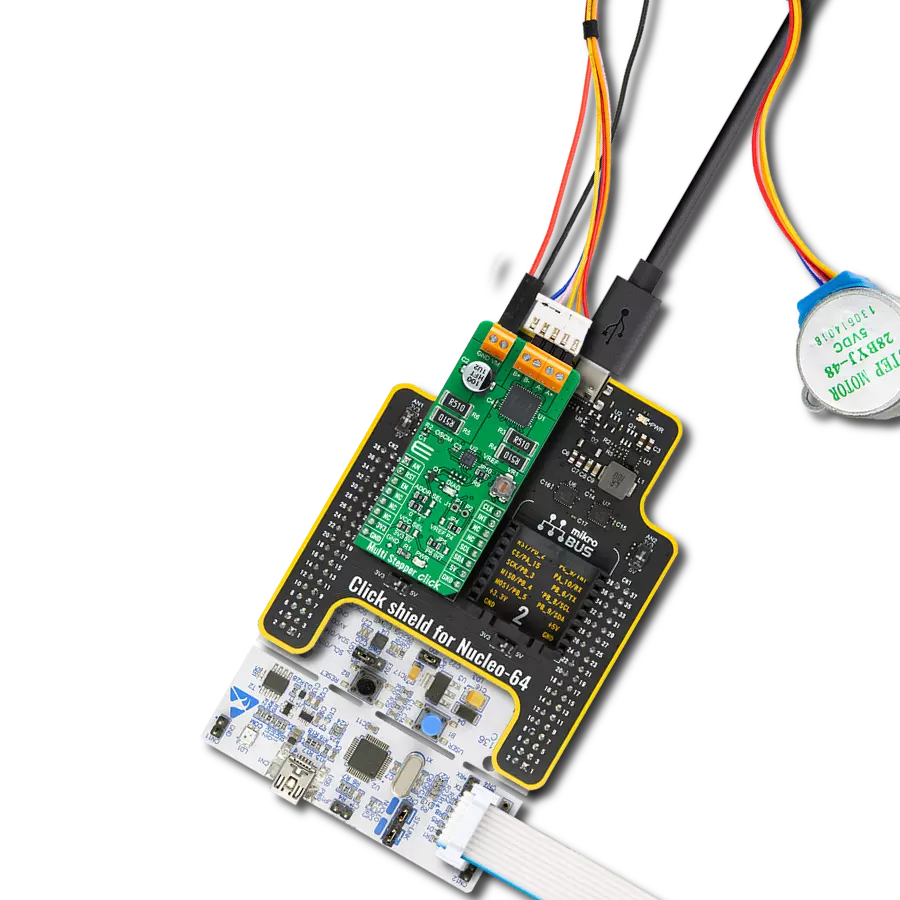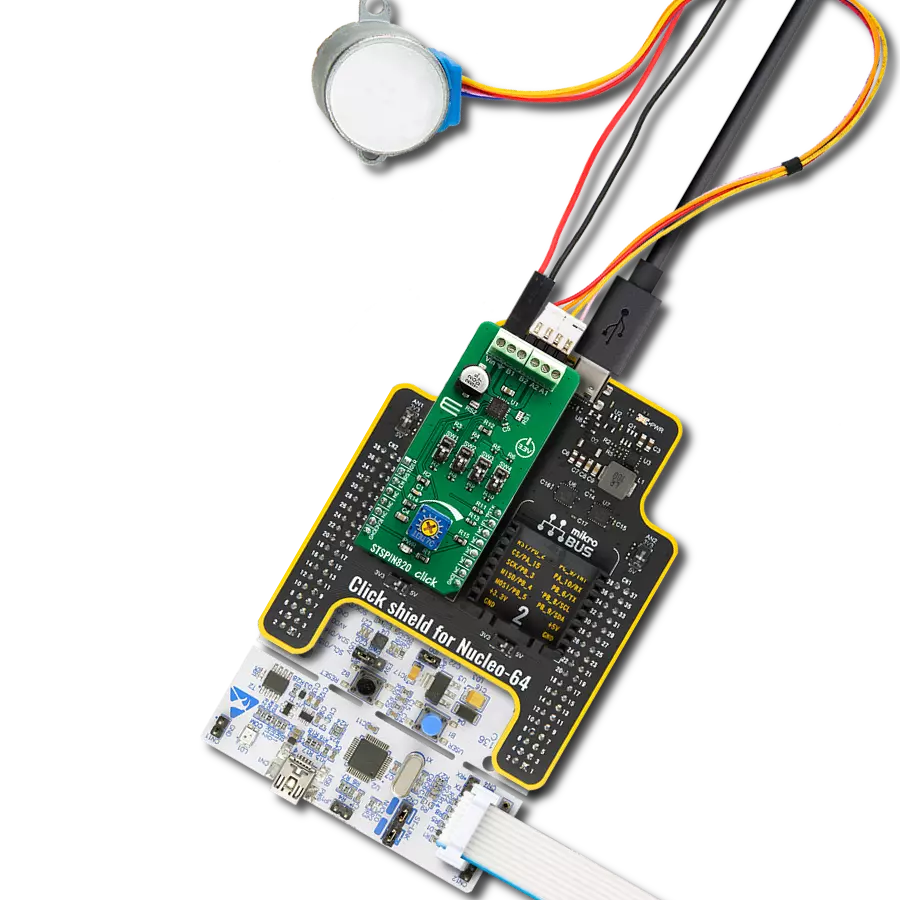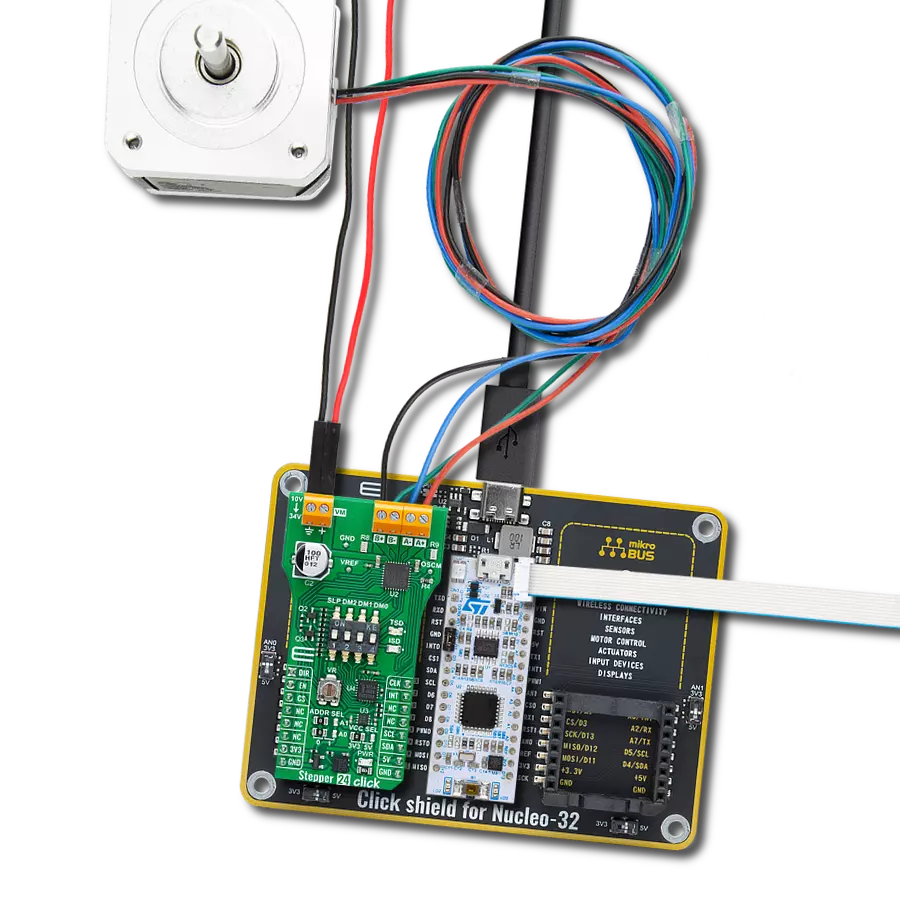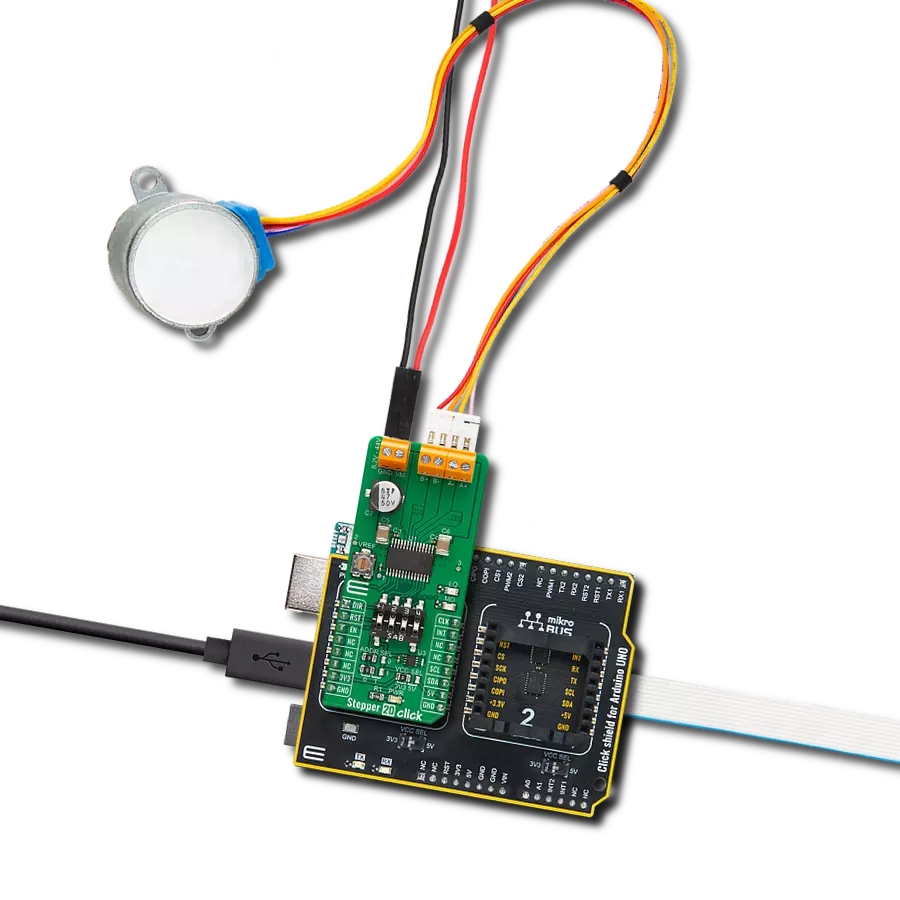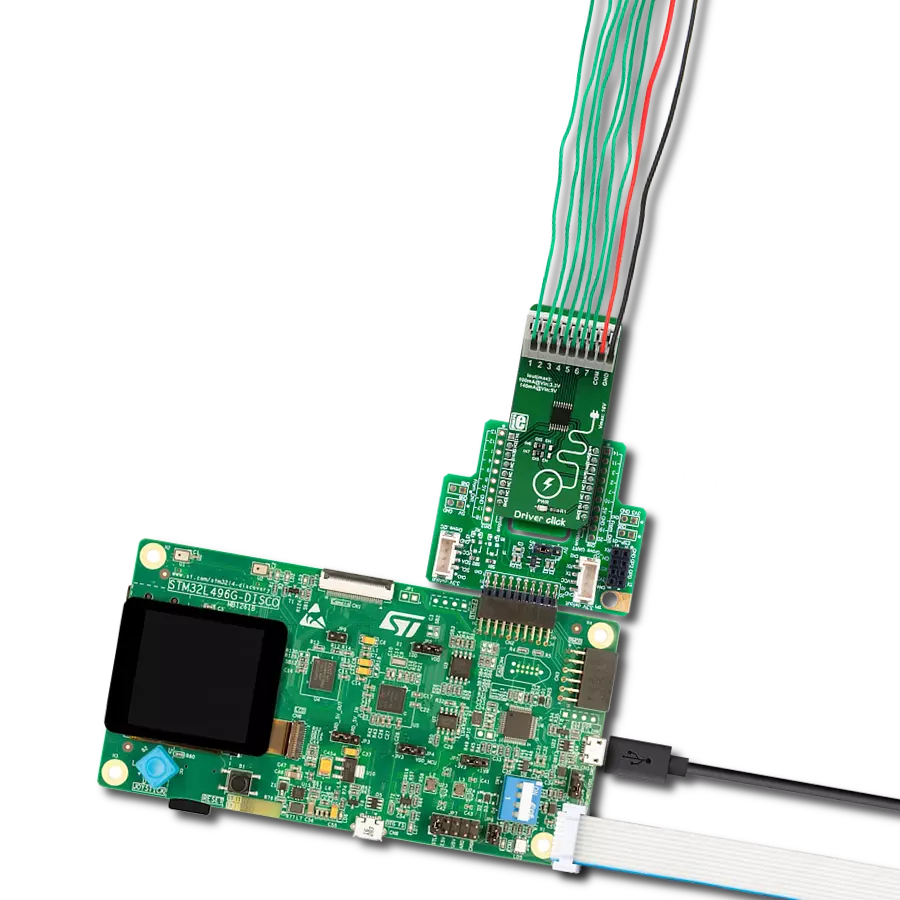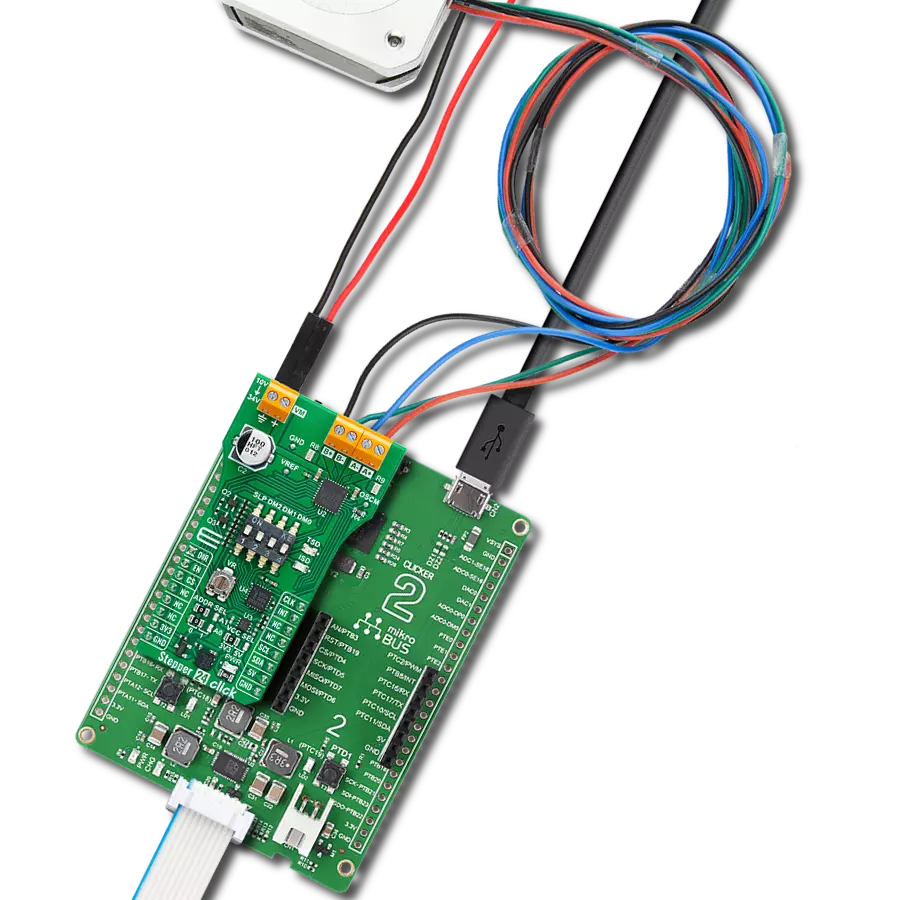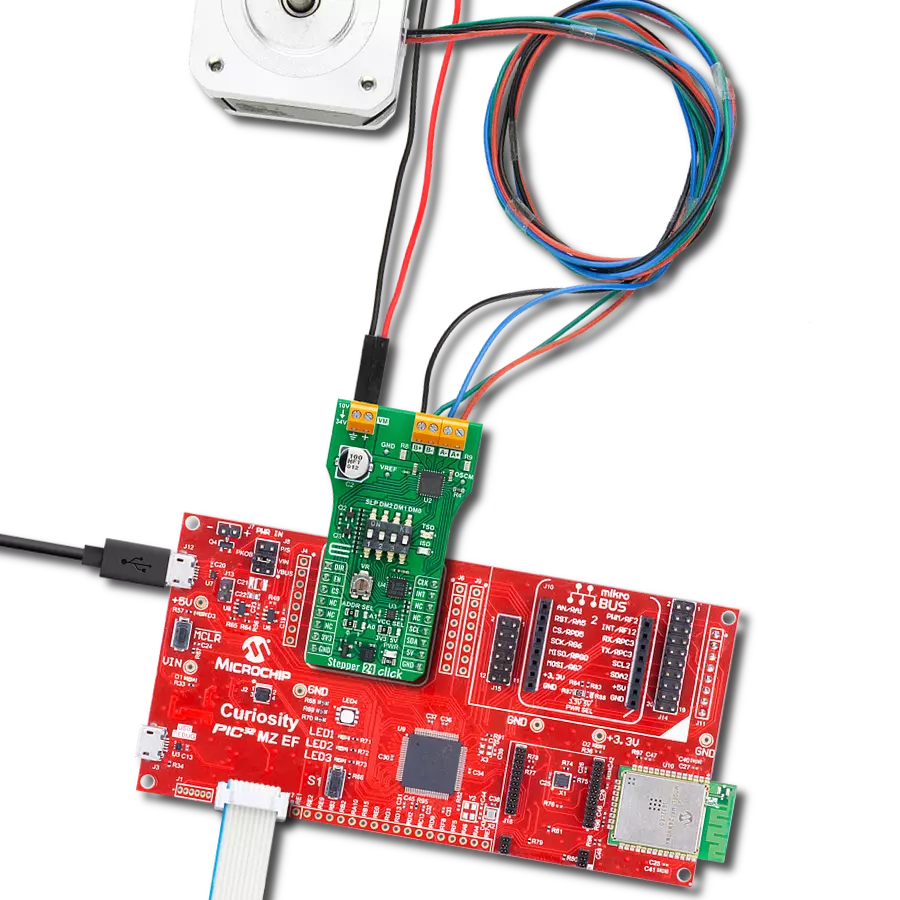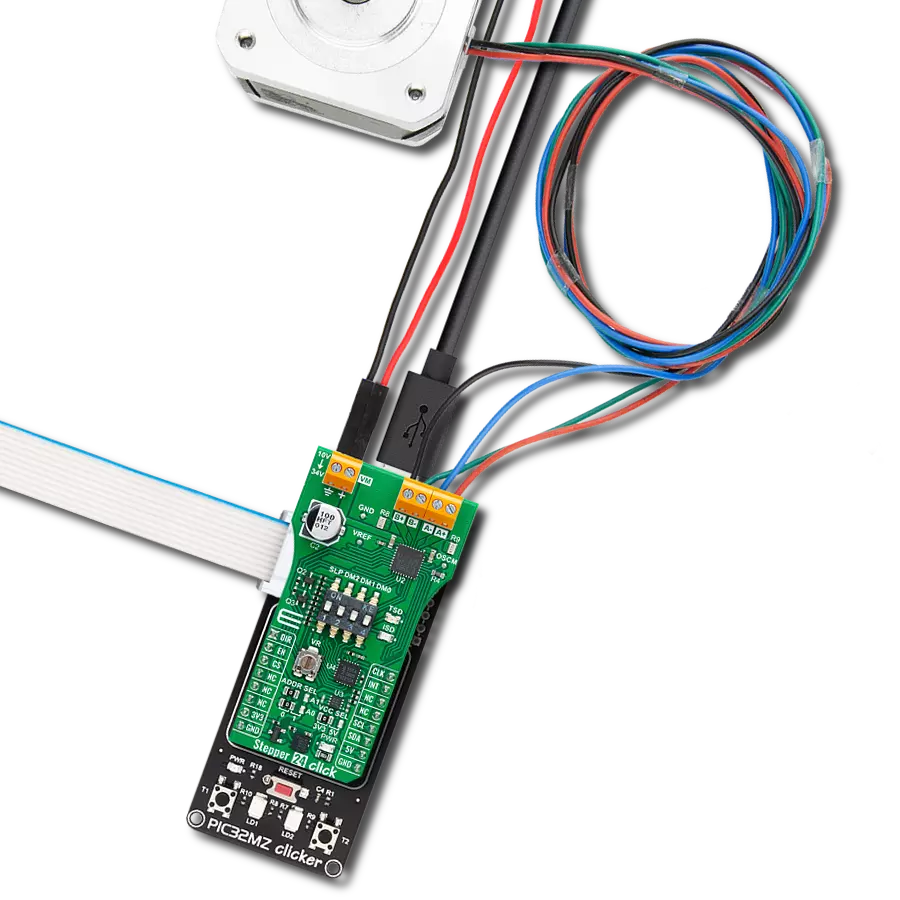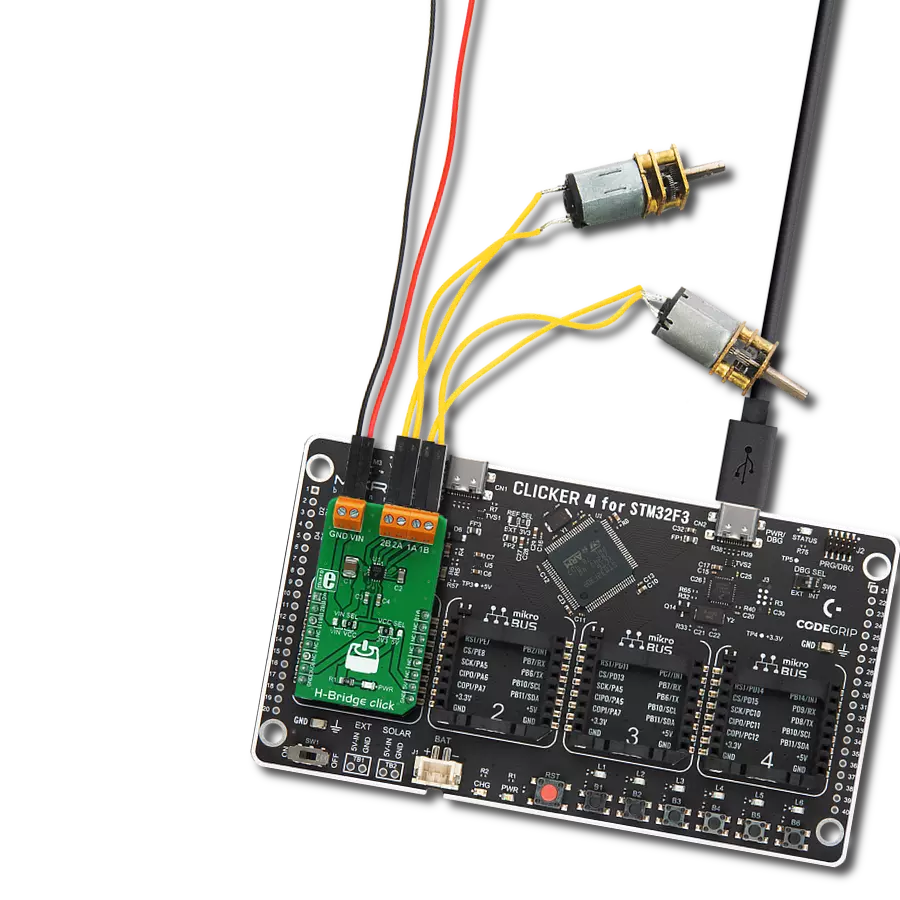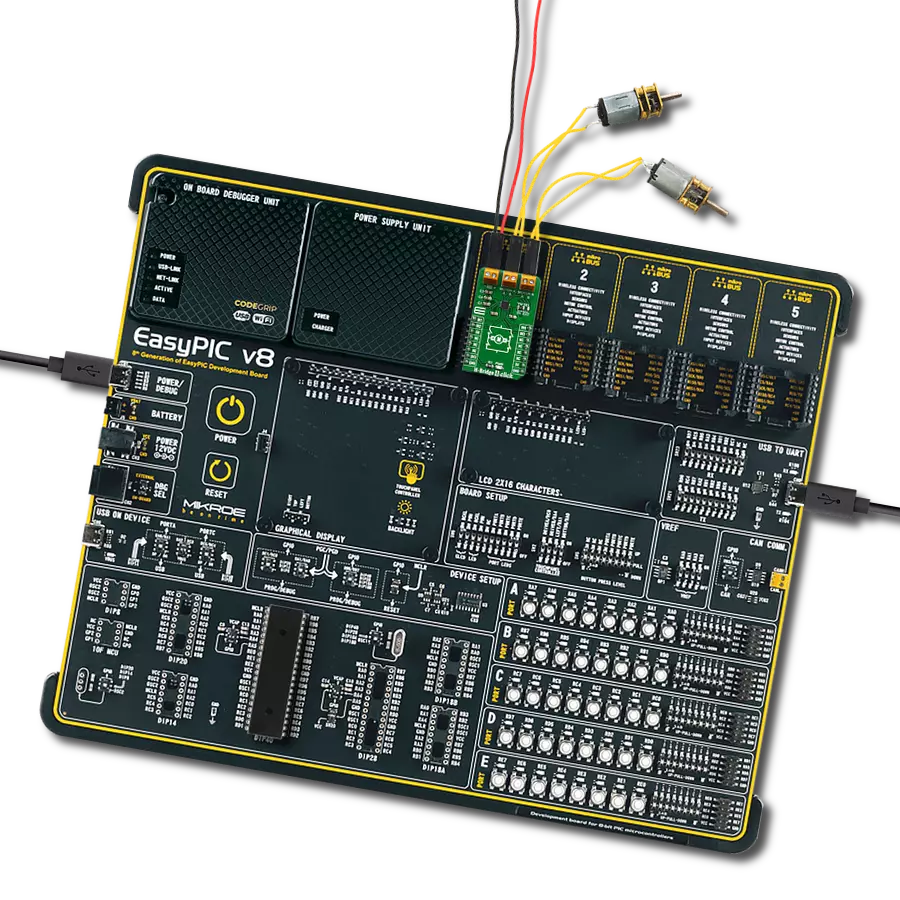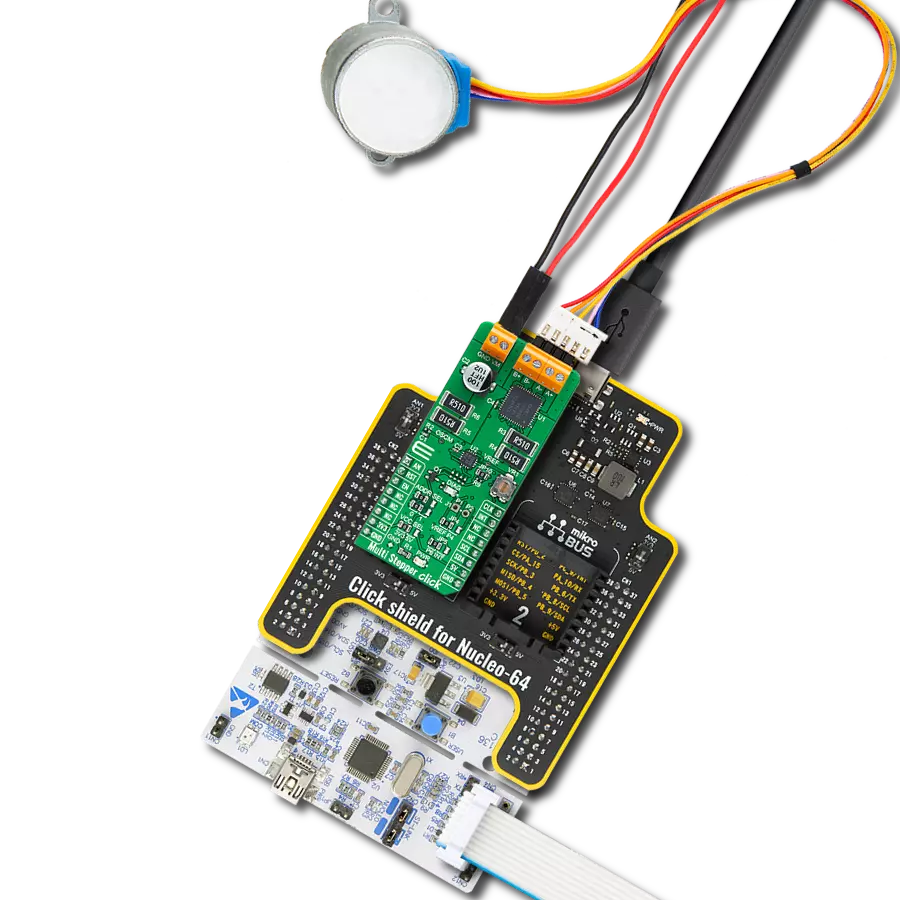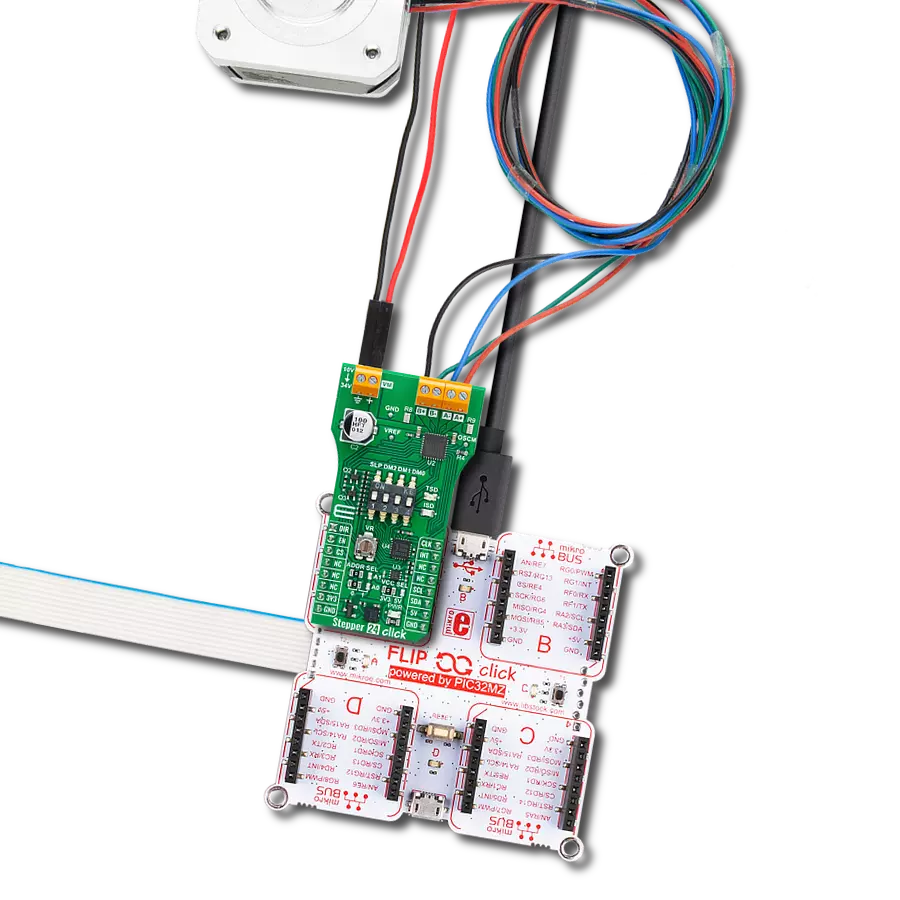Our all-in-one motor-driver solution is set to revolutionize the automation industry, simplifying bipolar stepper motor control like never before
A
A
Hardware Overview
How does it work?
Stepper 16 Click is based on the NCV70517, an integrated motor-driver solution for bipolar stepper motors with integrated current sense and current regulation from ON Semiconductor. Two H−bridges are integrated to drive a bipolar stepper motor with a PWM current control loop with on-chip current sensing implemented for each H−bridge. It provides complete output protection, overcurrent protection, thermal warning and shutdown, and a proprietary PWM algorithm for reliable current control, allowing automatic selection of fast and slow decay. The NCV70517 communicates with MCU using the standard SPI serial interface with a maximum frequency 10MHz. One of five possible stepping modes is selectable through bits of the SPI registers. After Power−On
or hard reset, the coil−current translator, which translates consecutive steps into corresponding currents in both motor coils for a given step mode, is set to the default to 1/16 micro−stepping at position ‘8’. Besides the micro−step modes, a full-step mode is implemented, which activates only one coil. The direction of rotation is selected by input pin DIR routed to the RST pin of the mikroBUS™ socket and its polarity bit DIRP, which allows changing the direction of rotation through only SPI commands instead of the dedicated input pin. Besides, it also takes the next micro−step depending on the clock signal on the NXT input pin routed to the PWM pin of the mikroBUS™ socket and provides an error message on the ERR pin routed to the INT pin of the mikroBUS™ socket
if an electrical error, an undervoltage, or an elevated junction temperature is detected. This Click board™ supports an external power supply for the motor, which can be connected to the input terminal labeled as VEXT and should be within the range of 6V to 29V, while the stepper motor coils can be connected to the terminals labeled as XP, XN, YP, and YN. This Click board™ can be operated only with a 3.3V logic voltage level. The board must perform appropriate logic voltage level conversion before using MCUs with different logic levels. Also, it comes equipped with a library containing functions and an example code that can be used as a reference for further development.
Features overview
Development board
Nucleo-64 with STM32F091RC MCU offers a cost-effective and adaptable platform for developers to explore new ideas and prototype their designs. This board harnesses the versatility of the STM32 microcontroller, enabling users to select the optimal balance of performance and power consumption for their projects. It accommodates the STM32 microcontroller in the LQFP64 package and includes essential components such as a user LED, which doubles as an ARDUINO® signal, alongside user and reset push-buttons, and a 32.768kHz crystal oscillator for precise timing operations. Designed with expansion and flexibility in mind, the Nucleo-64 board features an ARDUINO® Uno V3 expansion connector and ST morpho extension pin
headers, granting complete access to the STM32's I/Os for comprehensive project integration. Power supply options are adaptable, supporting ST-LINK USB VBUS or external power sources, ensuring adaptability in various development environments. The board also has an on-board ST-LINK debugger/programmer with USB re-enumeration capability, simplifying the programming and debugging process. Moreover, the board is designed to simplify advanced development with its external SMPS for efficient Vcore logic supply, support for USB Device full speed or USB SNK/UFP full speed, and built-in cryptographic features, enhancing both the power efficiency and security of projects. Additional connectivity is
provided through dedicated connectors for external SMPS experimentation, a USB connector for the ST-LINK, and a MIPI® debug connector, expanding the possibilities for hardware interfacing and experimentation. Developers will find extensive support through comprehensive free software libraries and examples, courtesy of the STM32Cube MCU Package. This, combined with compatibility with a wide array of Integrated Development Environments (IDEs), including IAR Embedded Workbench®, MDK-ARM, and STM32CubeIDE, ensures a smooth and efficient development experience, allowing users to fully leverage the capabilities of the Nucleo-64 board in their projects.
Microcontroller Overview
MCU Card / MCU
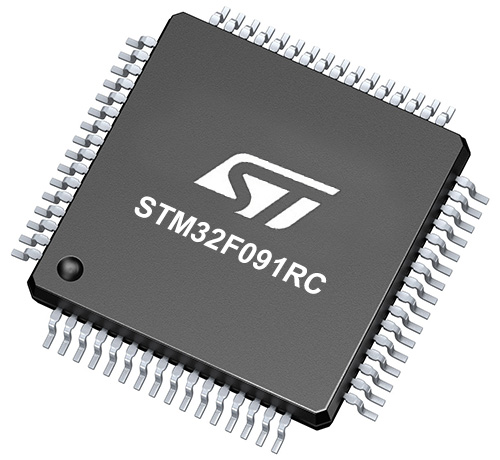
Architecture
ARM Cortex-M0
MCU Memory (KB)
256
Silicon Vendor
STMicroelectronics
Pin count
64
RAM (Bytes)
32768
You complete me!
Accessories
Click Shield for Nucleo-64 comes equipped with two proprietary mikroBUS™ sockets, allowing all the Click board™ devices to be interfaced with the STM32 Nucleo-64 board with no effort. This way, Mikroe allows its users to add any functionality from our ever-growing range of Click boards™, such as WiFi, GSM, GPS, Bluetooth, ZigBee, environmental sensors, LEDs, speech recognition, motor control, movement sensors, and many more. More than 1537 Click boards™, which can be stacked and integrated, are at your disposal. The STM32 Nucleo-64 boards are based on the microcontrollers in 64-pin packages, a 32-bit MCU with an ARM Cortex M4 processor operating at 84MHz, 512Kb Flash, and 96KB SRAM, divided into two regions where the top section represents the ST-Link/V2 debugger and programmer while the bottom section of the board is an actual development board. These boards are controlled and powered conveniently through a USB connection to program and efficiently debug the Nucleo-64 board out of the box, with an additional USB cable connected to the USB mini port on the board. Most of the STM32 microcontroller pins are brought to the IO pins on the left and right edge of the board, which are then connected to two existing mikroBUS™ sockets. This Click Shield also has several switches that perform functions such as selecting the logic levels of analog signals on mikroBUS™ sockets and selecting logic voltage levels of the mikroBUS™ sockets themselves. Besides, the user is offered the possibility of using any Click board™ with the help of existing bidirectional level-shifting voltage translators, regardless of whether the Click board™ operates at a 3.3V or 5V logic voltage level. Once you connect the STM32 Nucleo-64 board with our Click Shield for Nucleo-64, you can access hundreds of Click boards™, working with 3.3V or 5V logic voltage levels.
The 28BYJ-48 is an adaptable 5VDC stepper motor with a compact design, ideal for various applications. It features four phases, a speed variation ratio of 1/64, and a stride angle of 5.625°/64 steps, allowing precise control. The motor operates at a frequency of 100Hz and has a DC resistance of 50Ω ±7% at 25°C. It boasts an idle in-traction frequency greater than 600Hz and an idle out-traction frequency exceeding 1000Hz, ensuring reliability in different scenarios. With a self-positioning torque and in-traction torque both exceeding 34.3mN.m at 120Hz, the 28BYJ-48 offers robust performance. Its friction torque ranges from 600 to 1200 gf.cm, while the pull-in torque is 300 gf.cm. This motor makes a reliable and efficient choice for your stepper motor needs.
Used MCU Pins
mikroBUS™ mapper
Take a closer look
Click board™ Schematic

Step by step
Project assembly
Track your results in real time
Application Output
1. Application Output - In Debug mode, the 'Application Output' window enables real-time data monitoring, offering direct insight into execution results. Ensure proper data display by configuring the environment correctly using the provided tutorial.

2. UART Terminal - Use the UART Terminal to monitor data transmission via a USB to UART converter, allowing direct communication between the Click board™ and your development system. Configure the baud rate and other serial settings according to your project's requirements to ensure proper functionality. For step-by-step setup instructions, refer to the provided tutorial.

3. Plot Output - The Plot feature offers a powerful way to visualize real-time sensor data, enabling trend analysis, debugging, and comparison of multiple data points. To set it up correctly, follow the provided tutorial, which includes a step-by-step example of using the Plot feature to display Click board™ readings. To use the Plot feature in your code, use the function: plot(*insert_graph_name*, variable_name);. This is a general format, and it is up to the user to replace 'insert_graph_name' with the actual graph name and 'variable_name' with the parameter to be displayed.

Software Support
Library Description
This library contains API for Stepper 16 Click driver.
Key functions:
stepper16_hard_reset- Resets device.stepper16_set_step_resolution- Set step resolution.stepper16_move_motor_angle- Move motor in angle value.
Open Source
Code example
The complete application code and a ready-to-use project are available through the NECTO Studio Package Manager for direct installation in the NECTO Studio. The application code can also be found on the MIKROE GitHub account.
/*!
* @file main.c
* @brief Stepper16 Click example
*
* # Description
* This example showcases the device's ability to control the motor.
* It initializes the device for control and moves the motor in two
* directions in a variety of speeds and step resolutions for 360 degrees.
*
* The demo application is composed of two sections :
*
* ## Application Init
* Initializes UART and SPI communication modules, and additional
* pins for motor control, resets device, set's default configuration,
* and reads its ID and sets
*
* ## Application Task
* First it move motor clockwise for 360 degrees in medium speed and
* full step resolution. Then changes direction and moves motor for
* 180 degrees in slow speed and quarter step, and additional 180 degrees
* in fast speed and 1/16 step resolution.
*
* @note
* Device is powered by externam VM so for communication to work Click
* board should be connected on power supply from 6V to 29V. At the start of
* application user should reset device and read it's Status register 1 to clear it.
* After that it can communicate with device and control it noramaly.
*
* @author Luka Filipovic
*
*/
#include "board.h"
#include "log.h"
#include "stepper16.h"
static stepper16_t stepper16;
static log_t logger;
/**
* @brief Check error
* @details Checks if one of error flags in context
* object is set and logs flag error.
* @param[in] ctx : Click context object.
* See #stepper18_t object definition for detailed explanation.
* @return Nothing.
*/
static void check_error ( stepper16_t *ctx );
void application_init ( void )
{
uint16_t read_data = 0;
log_cfg_t log_cfg; /**< Logger config object. */
stepper16_cfg_t stepper16_cfg; /**< Click config object. */
/**
* Logger initialization.
* Default baud rate: 115200
* Default log level: LOG_LEVEL_DEBUG
* @note If USB_UART_RX and USB_UART_TX
* are defined as HAL_PIN_NC, you will
* need to define them manually for log to work.
* See @b LOG_MAP_USB_UART macro definition for detailed explanation.
*/
LOG_MAP_USB_UART( log_cfg );
log_init( &logger, &log_cfg );
log_info( &logger, " Application Init " );
// Click initialization.
stepper16_cfg_setup( &stepper16_cfg );
STEPPER16_MAP_MIKROBUS( stepper16_cfg, MIKROBUS_1 );
err_t init_flag = stepper16_init( &stepper16, &stepper16_cfg );
if ( init_flag == SPI_MASTER_ERROR )
{
log_error( &logger, " Application Init Error. " );
log_info( &logger, " Please, run program again... " );
for ( ; ; );
}
if ( STEPPER16_ERROR == stepper16_default_cfg ( &stepper16 ) )
{
log_error( &logger, " Default configuration. " );
log_info( &logger, " Please, run program again... " );
for ( ; ; );
}
stepper16_generic_read( &stepper16, STEPPER16_REG_SR4, &read_data );
log_info( &logger, "DEV ID: %d ", ( read_data >> 3 ) );
log_info( &logger, "REV ID: %d ", ( read_data & 3 ) );
log_info( &logger, " Application Task " );
stepper16_set_dir( &stepper16, 0 );
}
void application_task ( void )
{
static uint8_t direction = 0;
log_printf( &logger, "> Move 360deg in CW direction.\r\n" );
stepper16_set_step_resolution( &stepper16, STEPPER16_STEP_RES_FULL );
check_error( &stepper16 );
stepper16_move_motor_angle( &stepper16, 360, STEPPER16_SPEED_MEDIUM );
direction = !direction;
stepper16_set_dir( &stepper16, direction );
Delay_ms ( 500 );
log_printf( &logger, "> Move 180deg in CCW direction.\r\n" );
stepper16_set_step_resolution( &stepper16, STEPPER16_STEP_RES_QUARTER );
check_error( &stepper16 );
stepper16_move_motor_angle( &stepper16, 180, STEPPER16_SPEED_SLOW );
Delay_ms ( 1000 );
log_printf( &logger, "> Move 180deg in CCW direcion.\r\n" );
stepper16_set_step_resolution( &stepper16, STEPPER16_STEP_RES_1div16 );
check_error( &stepper16 );
stepper16_move_motor_angle( &stepper16, 180, STEPPER16_SPEED_FAST );
direction = !direction;
stepper16_set_dir( &stepper16, direction );
Delay_ms ( 1000 );
Delay_ms ( 1000 );
}
int main ( void )
{
/* Do not remove this line or clock might not be set correctly. */
#ifdef PREINIT_SUPPORTED
preinit();
#endif
application_init( );
for ( ; ; )
{
application_task( );
}
return 0;
}
static void check_error ( stepper16_t *ctx )
{
if ( ctx->spierr )
log_error( &logger, "SPI" );
if ( ctx->uv )
log_error( &logger, "Under voltage detection." );
if ( ctx->eldef )
log_error( &logger, "Eletrical defect." );
if ( ctx->tsd )
log_error( &logger, "Thermal shutdown." );
if ( ctx->tw )
log_error( &logger, "Thermal warning." );
}
// ------------------------------------------------------------------------ END
Additional Support
Resources
Category:Stepper
